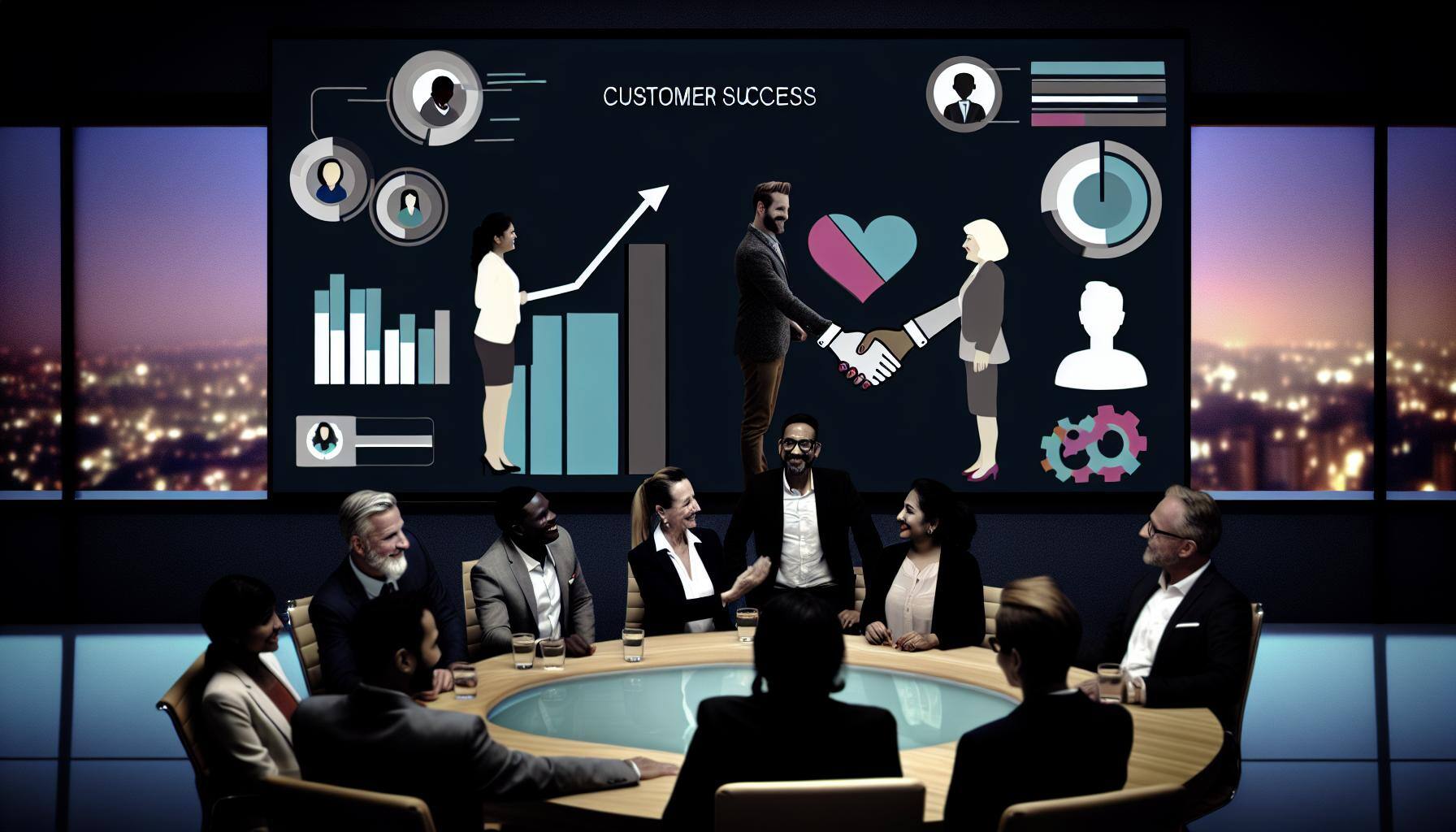Eight Practical Ways to Elevate Customer Experience and Drive Growth
Customer experience is the heartbeat of successful SaaS businesses. By focusing on elevating the user journey, you foster loyalty, reduce churn, and...
3 min read
Brian Polackoff
:
Apr 30, 2024 3:56:00 PM

In the fast-moving world of Software as a Service (SaaS), staying ahead means more than just having a great product from the start. It takes constant improvement and really listening to your users. Customer feedback is like a direct line to what your users want and need. By collecting, analyzing, and acting on this feedback, you can make your product better, keep users happy, and spark new ideas. Want to grow your SaaS business? Let's dive in. After all, who doesn't want happy users—maybe even happier than your morning coffee makes you?
Key Takeaways
Make Users Happier: Fix customer problems to improve their experience.
Guide Product Improvements: Use feedback to decide which updates and new features are most important.
Keep Improving: Always learn from users and make changes based on their feedback.
Surveys are a great way to get information from a lot of people. You can send them by email, include them in your app, or put them on your website. Tip: Keep surveys short and focused, asking questions that lead to useful answers. Tools like SurveyMonkey, Google Forms, and Typeform can help make surveys easy.
In-app feedback tools let you capture users' thoughts and experiences right when they happen. Tools like Intercom, UserVoice, and Hotjar help you gather feedback without interrupting the user experience. We use HotJar and find the user session recordings to be very helpful in showing us what our user actually saw and did.
Social media and online forums are great places to find unasked-for customer feedback. Watching for mentions of your product on sites like Twitter (or whatever they call it this week), LinkedIn, Reddit, and industry forums show what users think, their problems, and the features they want. Want to get started? Set up alerts for brand mentions and important keywords to track customer conversations.
Customer support interactions give you a direct line to your users' challenges and questions. Looking at support tickets, chat logs, and call records can reveal common problems and areas to improve. If you notice the same issues coming up often, like onboarding questions, it may be a chance to improve user education or product navigation.
Once you've collected feedback, the next step is to analyze this data to identify trends, patterns, and actionable insights.
Sort feedback into categories like bugs, feature requests, usability issues, and compliments. This helps you prioritize actions and use your resources well. For example, fixing usability issues might be more important than adding new features because they directly affect user satisfaction.
Sentiment analysis tools help you understand the emotional tone of feedback—whether it's positive, neutral, or negative. This is useful when you have a lot of data from social media or forums. Tools like MonkeyLearn and Lexalytics can analyze unstructured data and make the process easier.
Look for repeated themes or problems that many users mention. These likely show important areas to improve. Need help organizing feedback? Use a tool like Trello or Jira to tag and sort feedback into action items, making a plan that fits your product goals.
Not all feedback can be acted on right away. Of course, you should focus on changes that will have the biggest impact on user satisfaction and fit with your business goals. Sometimes, the best change is the one you can make today. For example, if lots of users struggle with onboarding, improving the onboarding process should be a high priority. What small improvement can you make right now that would have the biggest impact?
Small steps lead to progress. You only get value when you ship something. Make changes in small steps and use A/B testing to see how they work. This way, you can see if the changes help before rolling them out to everyone. A/B testing ensures you don't make huge mistakes or waste more time on things you think should work but don't. Using data to make decisions helps ensure each change meets user needs and improves the product. Do you have an A/B testing capability yet?
When you make changes based on user feedback, make sure to let your customers know. This not only shows that you care about their opinions, but also builds trust and strengthens your connection with them. People love seeing that their feedback makes a difference. Use in-app notifications, emails, or blog posts to share updates and keep users excited. After all, who doesn't love a good "we listened to you" story? Make notes of happy customers who might do some case studies or other collateral with you later.
Using customer feedback for continuous improvement is a powerful strategy for SaaS businesses that want to make better products, keep users happy, and drive new ideas. By collecting, analyzing, and acting on feedback, you create a positive cycle of improvement that helps your business grow. Ready to start focusing on customer feedback? Try these strategies today and see how they can boost user satisfaction and product growth.
If you need help forecasting, and learning more about the health of your customer accounts, give Churn Assassin a look.

Customer experience is the heartbeat of successful SaaS businesses. By focusing on elevating the user journey, you foster loyalty, reduce churn, and...

How You, as a C-Level Executive, Can Reduce Churn in Key Accounts In this guide, we will explore the significant role you play in reducing churn in...

In the fast-paced world of B2B SaaS, keeping your customers is the difference between thriving and merely surviving. High churn rates can drain your...